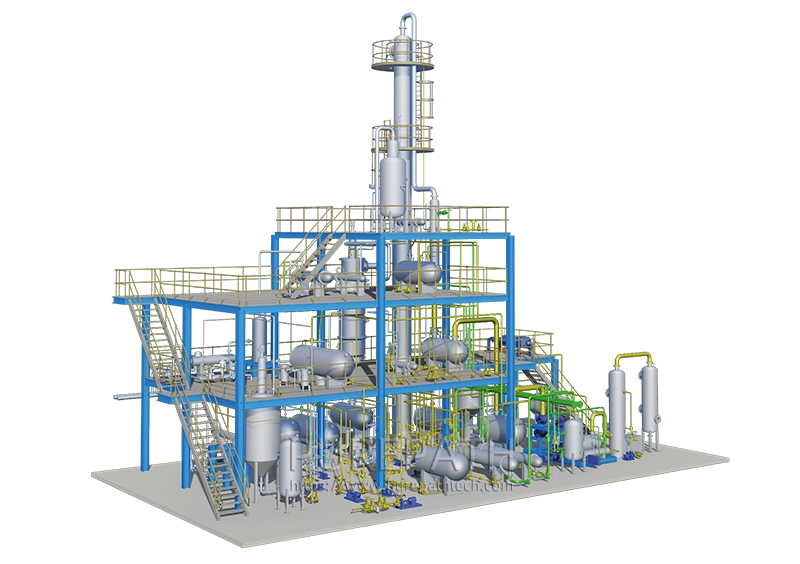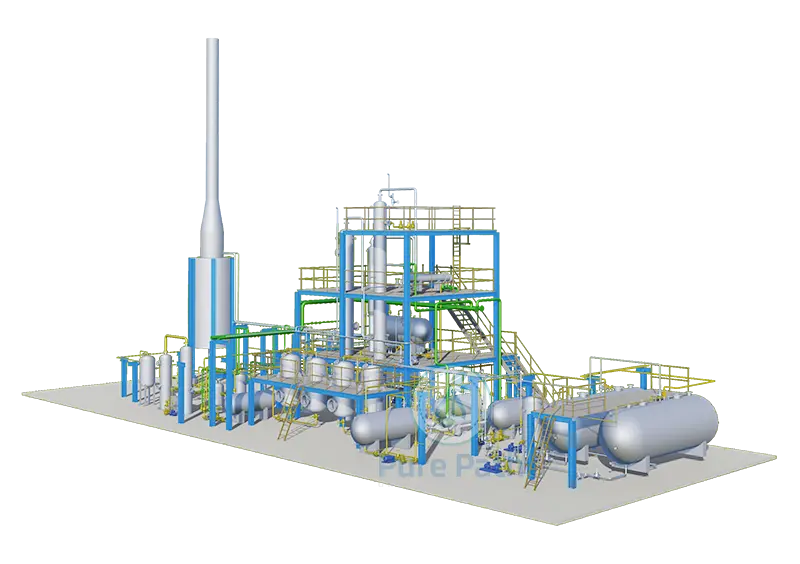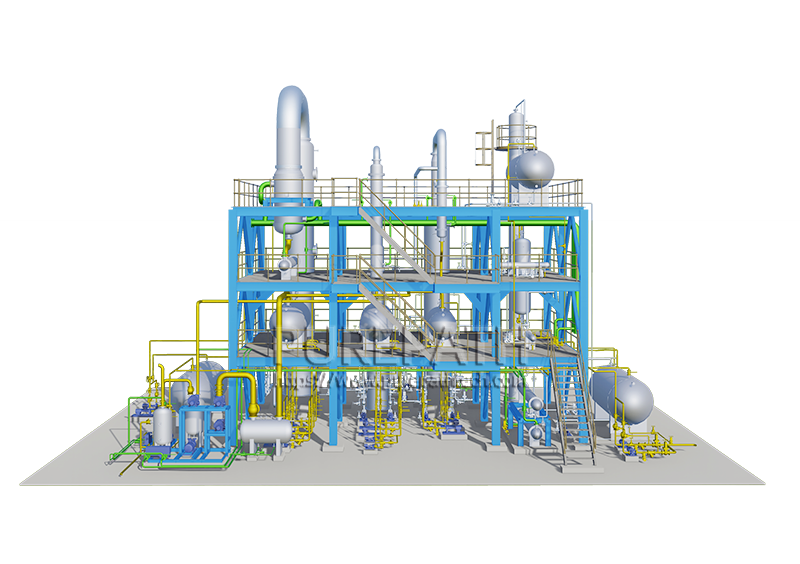What Products Come From Crude Oil Distillation?
The process of distilling crude oil is a vital step in refining it, allowing for the separation of crude oil into various useful products. This process is key in the creation of fuels, petrochemicals, and other materials needed by advanced modern civilizations. The article examines the processes involved in crude oil distillation, including some of their major results and various uses, as well as the significance of atmospheric and vacuum distillation units.
What is Crude Oil Distillation?

Distillation of crude oil is the first and most important stage in refining petroleum. It involves the separation of the complex mixture of hydrocarbons present in crude oil into simpler, more useful fractions based on boiling points. Distillation is the only way that helps refineries to achieve valuable products such as gasoline, diesel, kerosene, and jet fuel.
Distillation occurs in a tall steel column known as a distillation column, where crude oil is made to boil at very high temperatures. When heated, the different fractions of hydrocarbons evaporate at different temperatures and are taken out at various points along the column. Light fractions exit at the top, and heavier fractions remain at the bottom.
Distillation of crude oil forms the foundation for all subsequent refining and conversion processes. In the absence of distillation, crude oil would be a fairly recalcitrant raw material. By breaking it into distinct fractions, refineries can yield the fuels and products required for modern life.
Crude Oil Distillation Process
Distillation of crude oil is the first and foremost petroleum refining process in which raw crude oil is separated into fractions that can be used based on their boiling points. It is carried out in industrial units and consists of two major steps, namely atmospheric distillation and vacuum distillation.
1. Pre-Treatment: Desalting and Heating
Before the distillation process begins, crude oil is desalted to remove water, salts, and other contaminants that could damage refinery equipment. The oil is preheated in several heat exchangers and the temperature is raised before it’s pumped into the distillation column.
2. Atmospheric Distillation
The preheated crude (about 350–400°C) is fed to an atmospheric distillation unit (ADU) where it is flashed as a gas in a fractionating column. The vapors rise and cool, and condense at different levels based on their boiling points:
- Light Gases (C1-C4) – Propane, butane, and ethane (at the top of the column).
- Naphtha (C5-C10) – To be used for gasoline and petrochemical feedstocks.
- Kerosene (C11-C13) – Refined to jet fuel and lighting oil.
- Diesel (C14-C20) – Utilized for fueling trucks, buses, and heavy machinery.
- Heavy Gas Oil (C20+) – Refined further to form anode oils or cracking feedstock.
- Residue (Atmospheric Residue) – The densest cut, treated in vacuum distillation.

3. Vacuum Distillation
The residual from atmospheric distillation is too heavy to vaporize under normal pressure. It is sent to a vacuum distillation unit (VDU), where reduced pressure lowers the boiling points, allowing further separation into:
- Vacuum Gas Oil (VGO) – Used as lubricants or for catalytic cracking.
- Lubricating Oil Base Stocks – Refined into motor oils.
- Asphalt & Bitumen – Used in road construction and roof coverings.
This two-stage process gives maximum yield of valuable products with minimum waste. Profitability and product quality of the refinery rely significantly on the efficiency of atmospheric and vacuum distillation units.
Key Products from Crude Oil Distillation
Distillation of crude oil provides a range of useful products, but four of the most important are gasoline, diesel fuel, jet fuel, and lubricants. Each of these plays a vital role in aspects of modern life and business. Each is discussed in greater detail below:
1. Gasoline
Gasoline is the most important and most versatile of all products derived from crude oil distillation. It is primarily used as a fuel for automobiles, motorcycles, and small engines. Produced in the upper section of the atmospheric distillation column, gasoline has a relatively low boiling point and is made as a lighter fraction. For uses of increased performance as well as reduction of environmental impacts, gasoline is commonly further processed with additives and subjected to processes like catalytic reforming. As a high-demand commodity all over the globe, gasoline is a vital sector of the transportation sector and contributes considerably to refiner revenue.
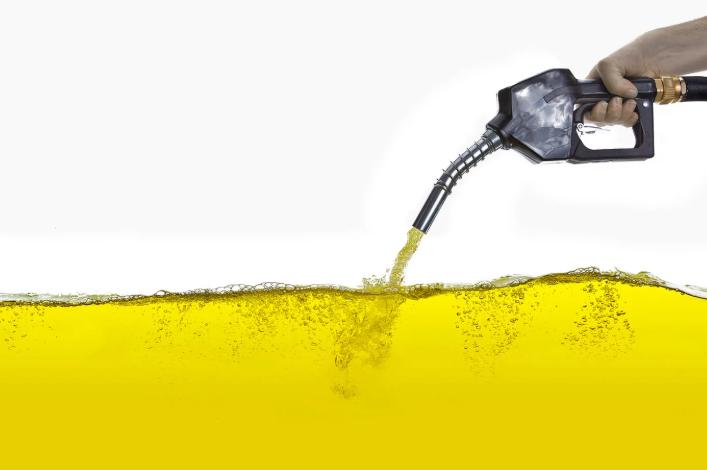
2. Diesel Fuel
Diesel is a heavier cut of gasoline and is taken from the middle of the distillation column. It is widely used to power trucks, buses, ships, and some types of vehicles, particularly in industrial and commercial settings. Diesel engines possess the efficiency and durability needed for freight transport and logistics, which explains the significance of diesel in freight haulage and logistics. Diesel can also be further refined into ultra-low sulfur diesel (ULSD), a cleaner-burning fuel that meets very high environmental standards.
3. Jet Fuel
Jet fuel is also referred to as aviation turbine fuel (ATF) and is a heavily refined product applied in jet turbines. It is similar in composition to kerosene and is typically recovered from the middle distillates of the atmospheric distillation unit. Jet fuel must meet rigorous quality and safety standards, including high energy content, low freezing point, and clean combustion properties. The fuel is vital to commercial aviation, military planes, and cargo planes, so it is one of the most strategic products of crude oil distillation.
4. Lubricating Oils
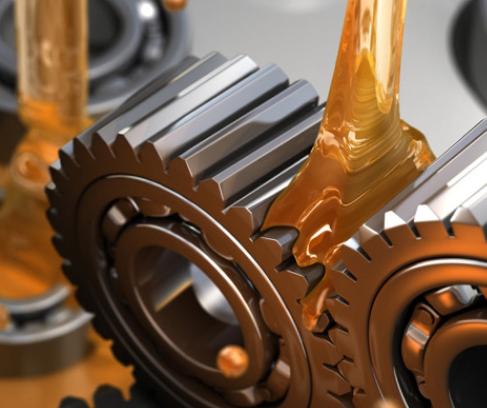
Lubrication oils are heavier fractions that are normally separated in the vacuum distillation column. Lubricating oils are used in the mitigation of wear and friction in machinery, engines, and industrial devices. Lubricating oil fractions, after being distilled, go through other refining processes like solvent extraction and dewaxing for improved performance and endurance. The role of these lubricating oils is critical in the maintenance of mechanical system efficiency and reliability across all industries, from the automobile industry to manufacturing industries.
Applications of Crude Oil Distillation Products
The crude oil distillation products are essential to many aspects of daily life and global industry. They find applications in many industries, from transport and electrical power generation to household and industrial uses. The primary applications of these products are as follows:
1. Fuel for Transport
The largest and most significant application of crude oil distillation products is transportation. Gasoline propels automobiles, motorbikes, and small engines, while diesel fuels trucks, buses, trains, and boats. Jet fuel is vital to commercial and military air transport and makes possible the transportation of goods and people around the globe. These fuels are the lifeblood of the global economy and make logistics, travel, and trade possible.
2. Industrial and Commercial Operations
Diesel and lubricating oils have significant uses in industry. Diesel fuel operates generators, construction equipment, and large trucks to give reliable energy in the wild and off-grid areas. Lubricating oils reduce engine and machine friction, thus increasing their efficiency and the lifespan of equipment applied in manufacturing, agriculture, and mining.
3. Residential and Domestic Use
A number of crude petroleum distillate products find applications in homes. Kerosene, for example, finds application in heating and lighting, particularly in regions where electricity is not available. Certain refined oils find applications in domestic generators and heaters.
4. Chemical and Petrochemical Industry
Naphtha and other lower-boiling-point fractions serve as feedstocks for the petrochemical industry. They are eventually converted to make plastics, synthetic rubber, fertilizers, solvents, and a wide range of common consumer products.
In summary, the variety of products from the crude oil distillation guarantees they are pivotal in modern infrastructure, economic development, and daily life worldwide.
The Role of Atmospheric and Vacuum Distillation Units
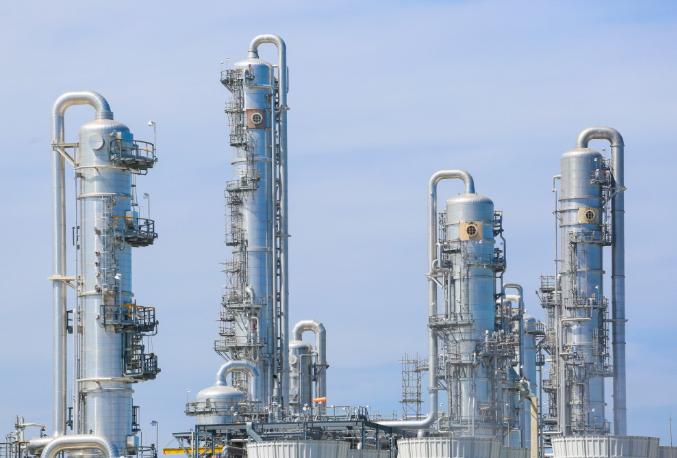
Vacuum and atmospheric distillation units are the focal equipment in the crude oil distillation process, collectively helping to fractionate crude oil into added-value fractions effectively.
The very beginning of the refining process is the Atmospheric Distillation Unit (ADU). It’s here that crude is heated to a temperature of around 350–400°C and pumped into a relatively tall column at atmospheric pressure. The lower-boiling-point lighter fractions—gases, naphtha (gasoline), kerosene, and diesel—are vaporized and driven to various levels in the atmospheric-pressure column. This unit treats most of the more volatile and lighter product separation.
There remain certain heavier fractions that cannot be distilled efficiently under atmospheric pressure, as there is a risk of thermal cracking. The Vacuum Distillation Unit (VDU) handles this. The VDU works at low pressure, which lowers the boiling points of these residual heavy fractions and thereby allows them to be distilled at low temperature without decomposition. This unit is for recovering useful heavy products like lubricating oil base stocks, heavy gas oils, and feedstocks for other processing units like catalytic crackers.
Atmospheric and vacuum distillation units are combined to maximize product yield and quality, and therefore, they play a key role in the efficient and flexible refining of crude oil.
The petroleum industry relies heavily on the distillation of crude oil, as it yields fuels and materials essential for the functioning of global economies. A better understanding of how atmospheric and vacuum distillation units work alongside crude oil’s distillation process helps in appreciating the transformation of raw crude oil into daily essentials.
Need to know details about distillation units? Reach out to us now!


